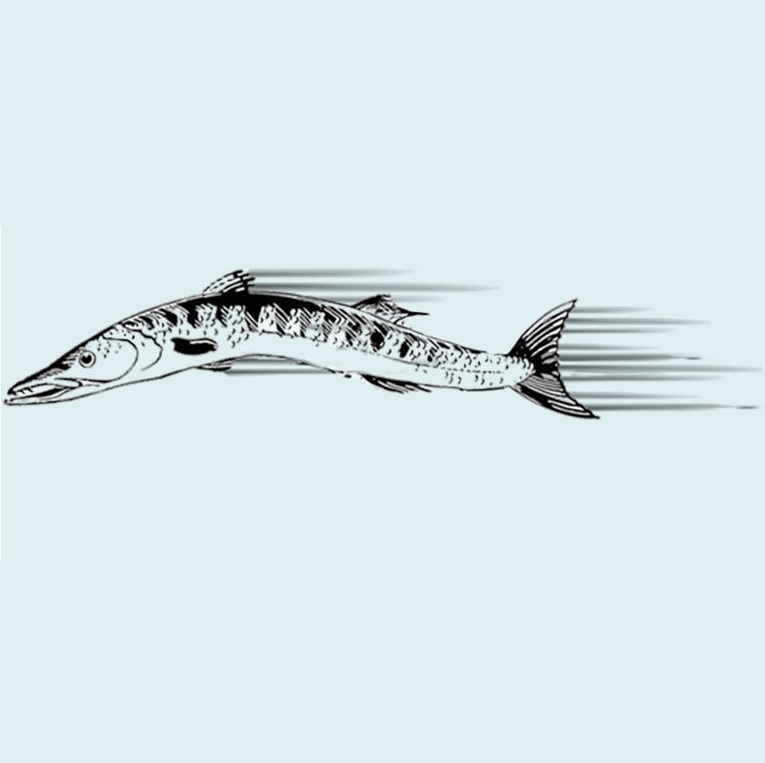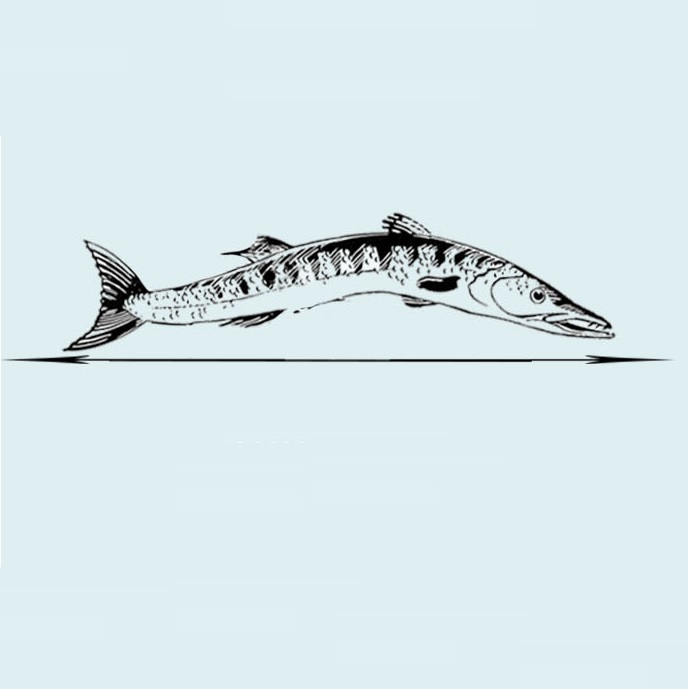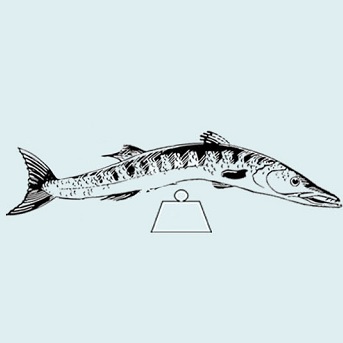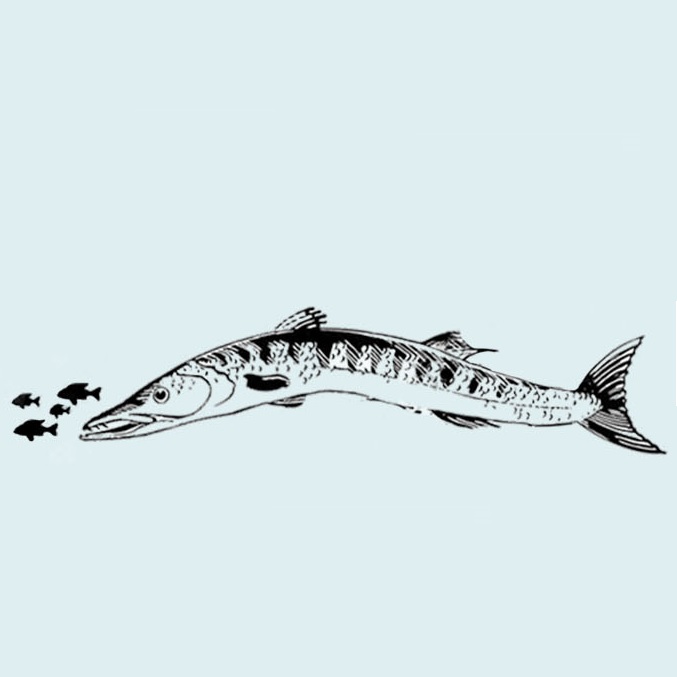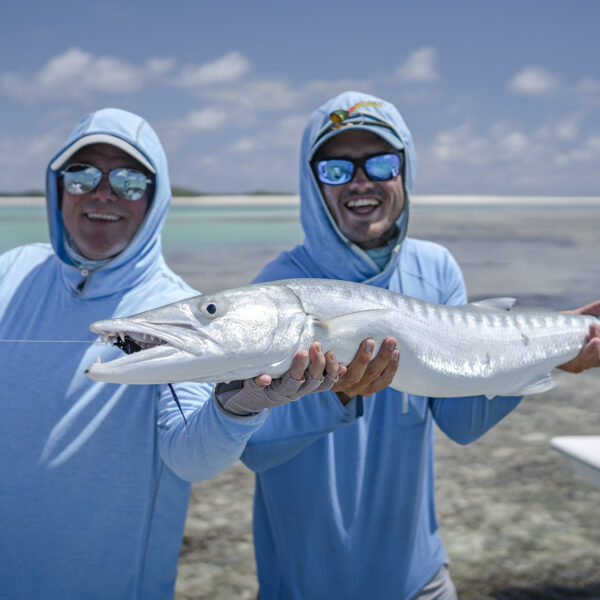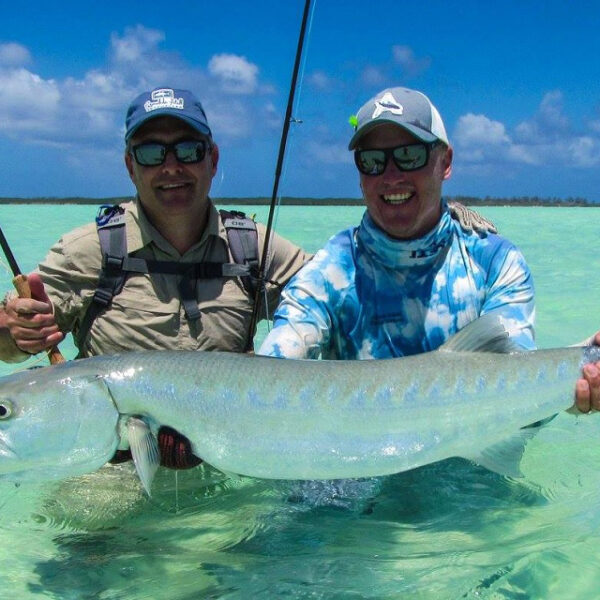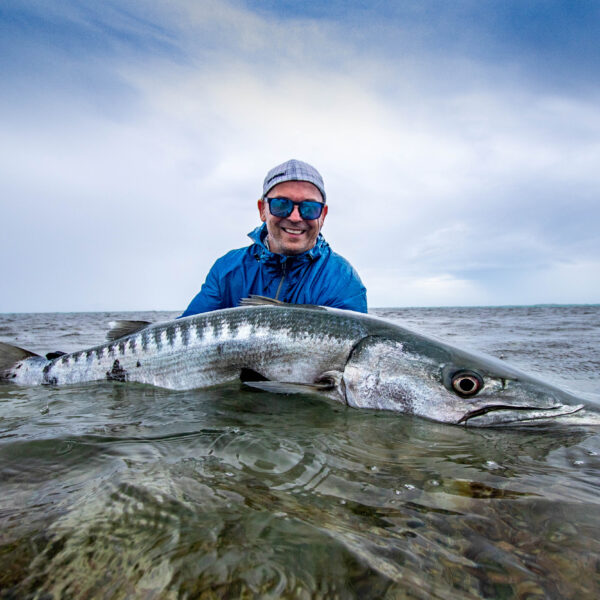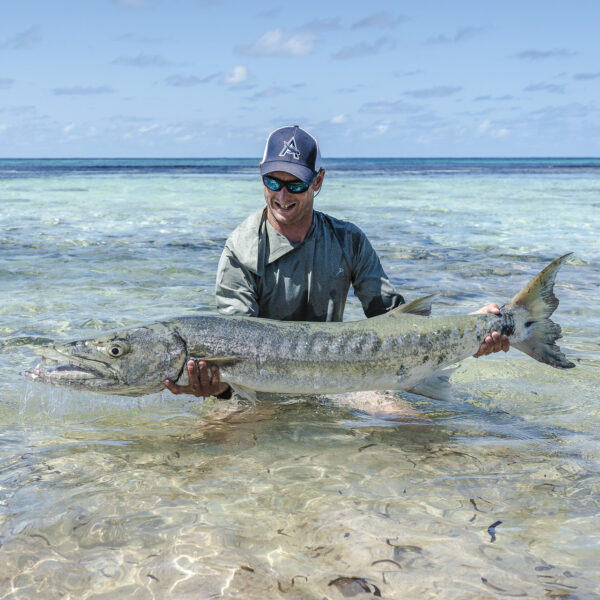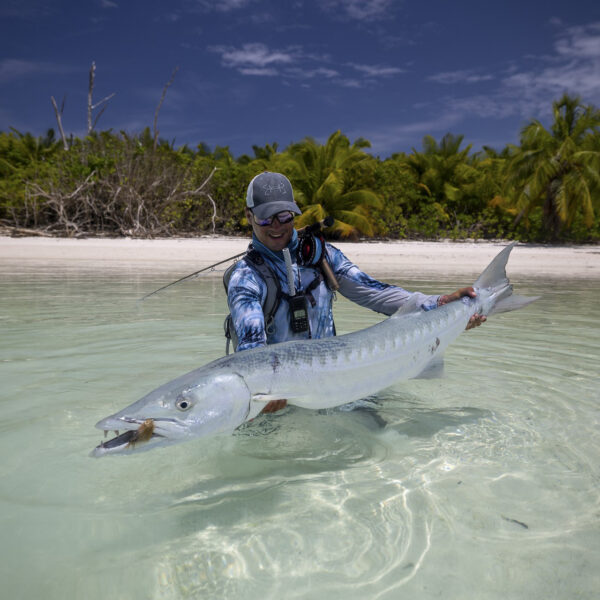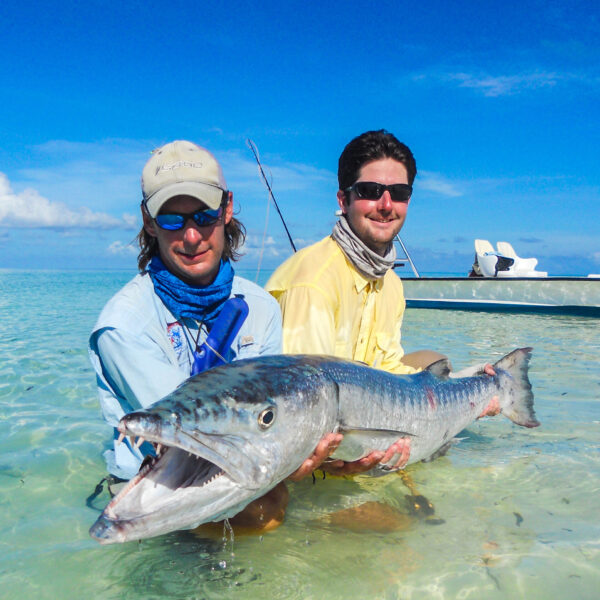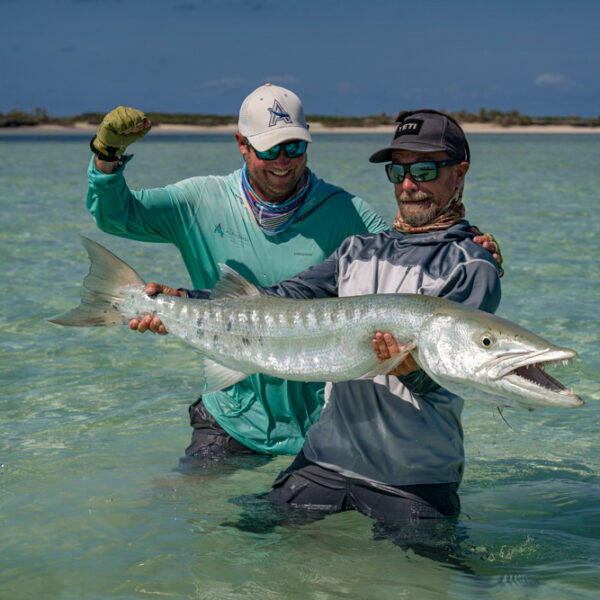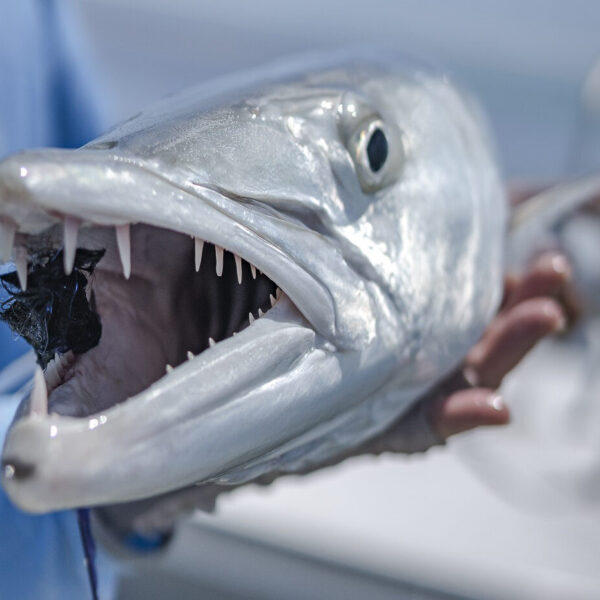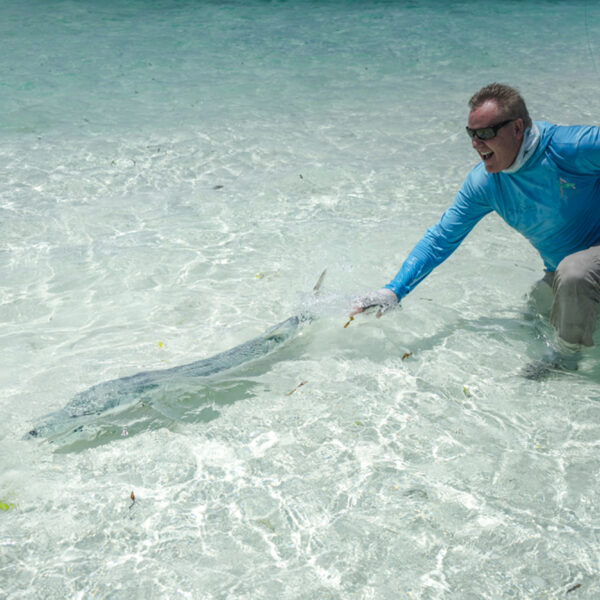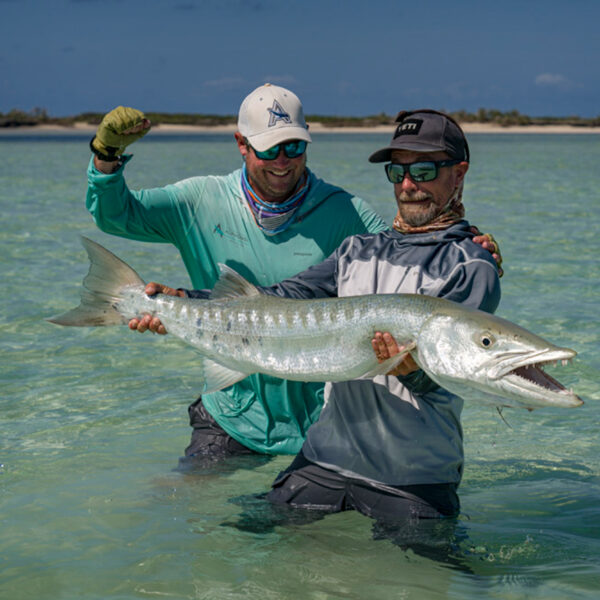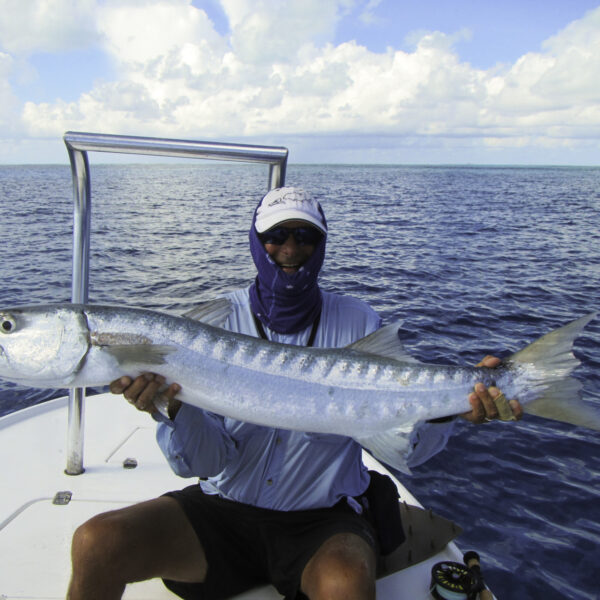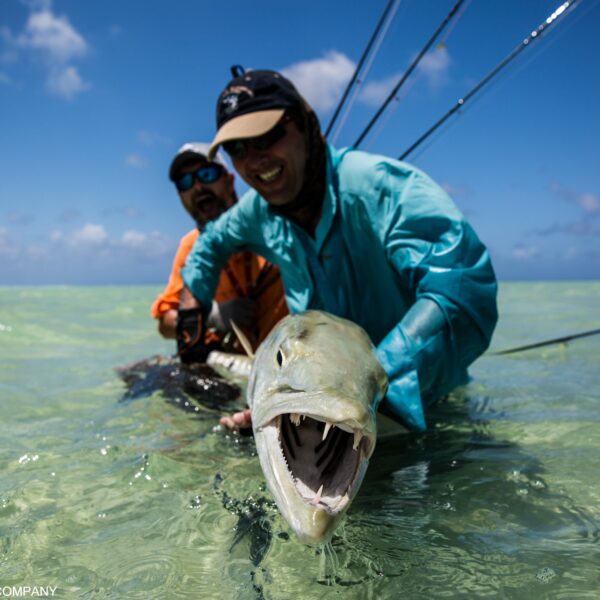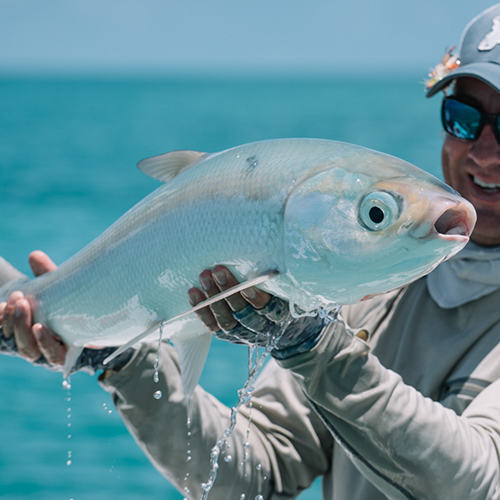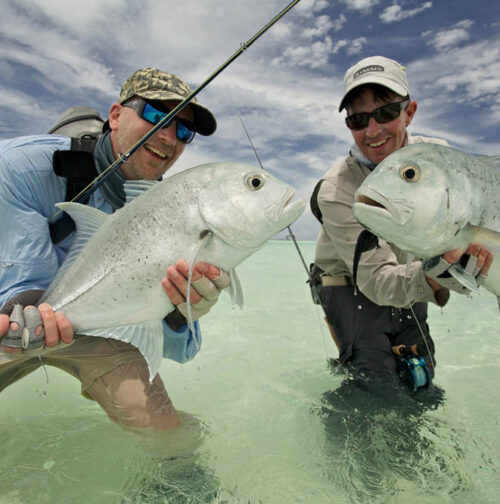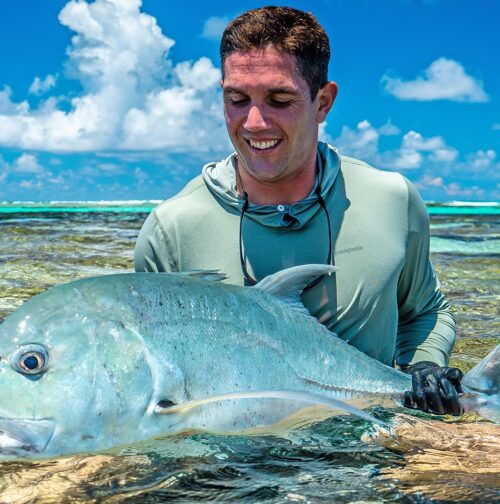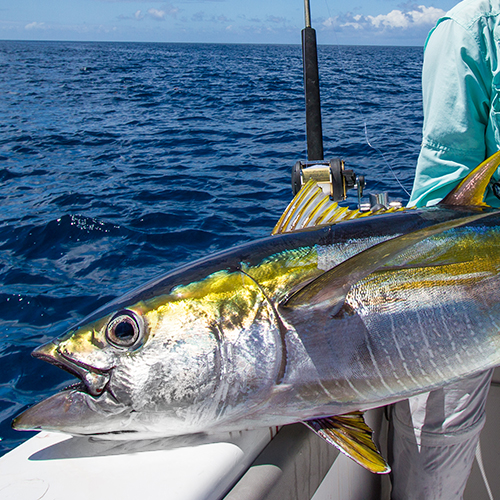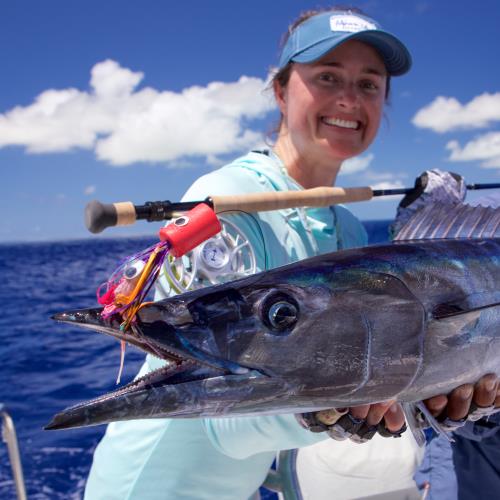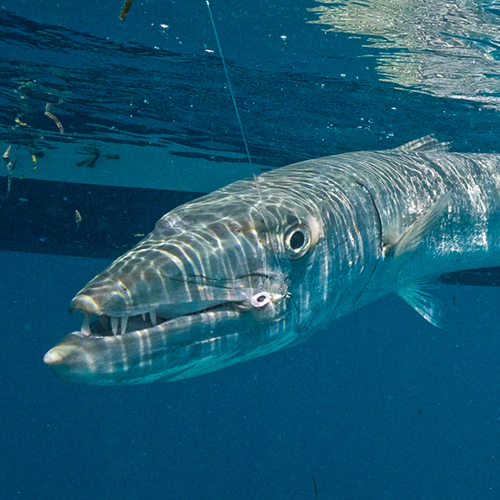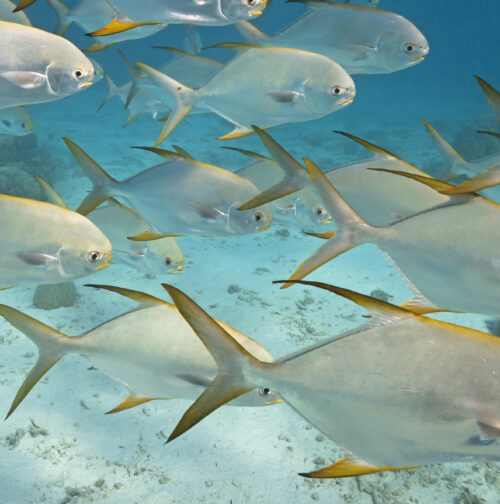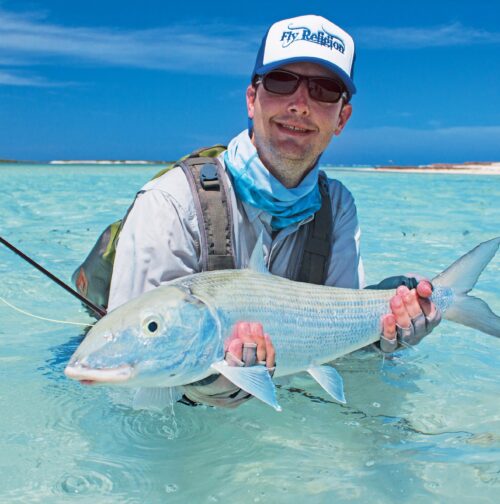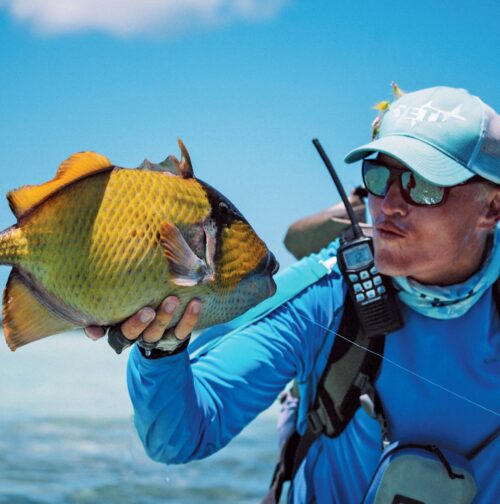New Travel Regulations and Last Minute Availability
As of the 25th of March, Seychelles is welcoming guests from everywhere in the world, regardless of their vaccination status. The only requirement is a negative PCR test within 72 hours of departure, as well as a Health Travel Authorisation. Enjoy this opportunity to truly get away from the crowds and experience the blissful isolation offered by our destinations in the Outer Islands of Seychelles.
New Travel Regulations and Last Minute Availability
As of the 25th of March, Seychelles is welcoming guests from everywhere in the world, regardless of their vaccination status. The only requirement is a negative PCR test within 72 hours of departure, as well as a Health Travel Authorisation. Enjoy this opportunity to truly get away from the crowds and experience the blissful isolation offered by our destinations in the Outer Islands of Seychelles.

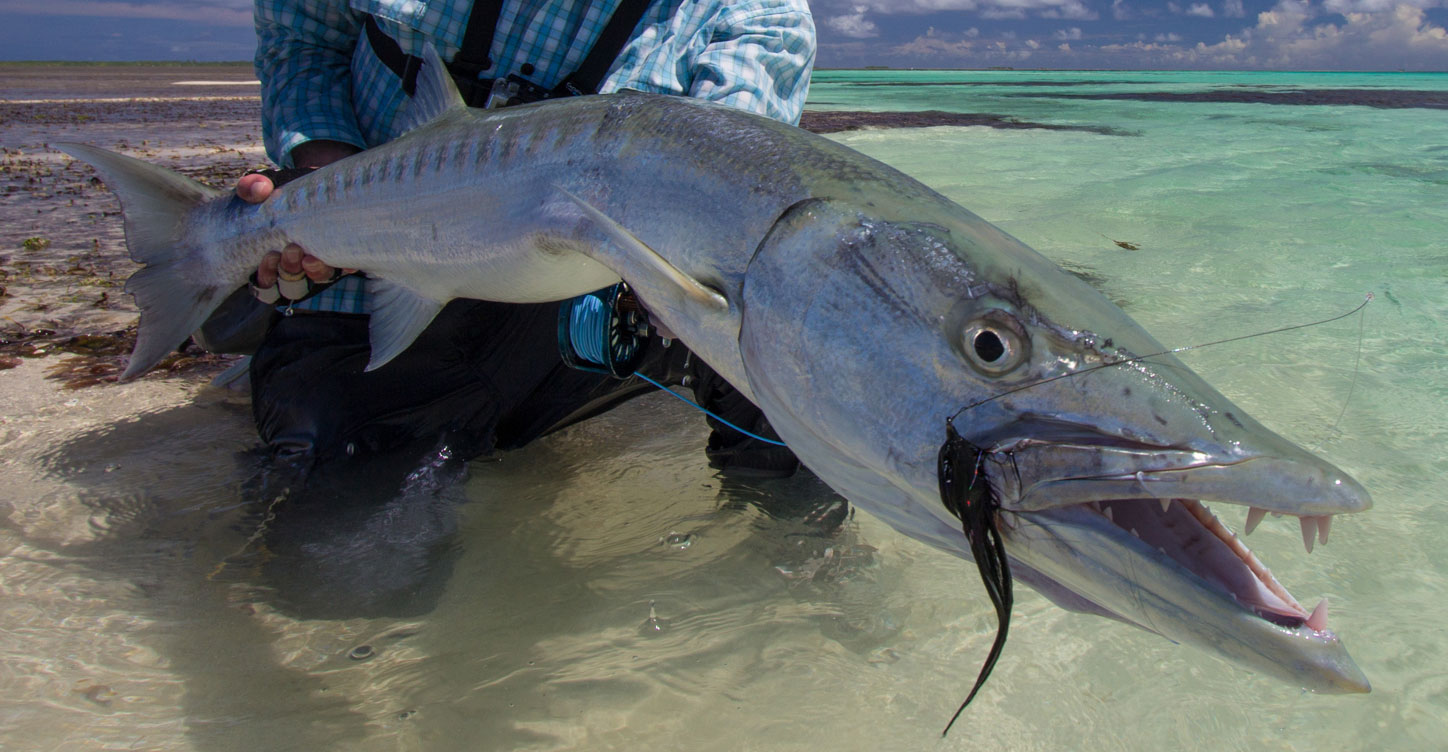
Fly Fishing Barracuda
Found in many tropical to temperate waters throughout the Indo-Pacific region and subtropical Atlantic, the barracuda is a fiercely opportunistic predator that puts up a good fight. We love fly fishing for barracuda because you need more than the best barracuda flies, rods, and tackle – you need your wits about you!
Known as the perfect ambush predator, the barracuda fish is easily distinguishable with its elongated cylindrical body. Its long and pointed snout displays a distinctive undershot bottom jaw with razor-sharp Barracuda teeth that stand out.
The body of the barracuda fish is covered in well-formed scales that give it an almost snake-like pattern. The colouration changes from blue-grey above to silvery, chalky white below, while a prominent lateral line extends from behind the head all the way to the tail.
KEY FACTS ABOUT BARRACUDA
The Search For Barracuda
Barracuda are generally not hard to spot. Up until the moment they attack, they are slow-moving saltwater fish, often lying motionless in ambush. Many of the large barracuda fish that inhabit the flats, mangroves, and surf are territorial fish and can often be seen on the same tides as the following baitfish into the shallows. It is not uncommon to find great barracuda size over a metre in barely a foot of water.
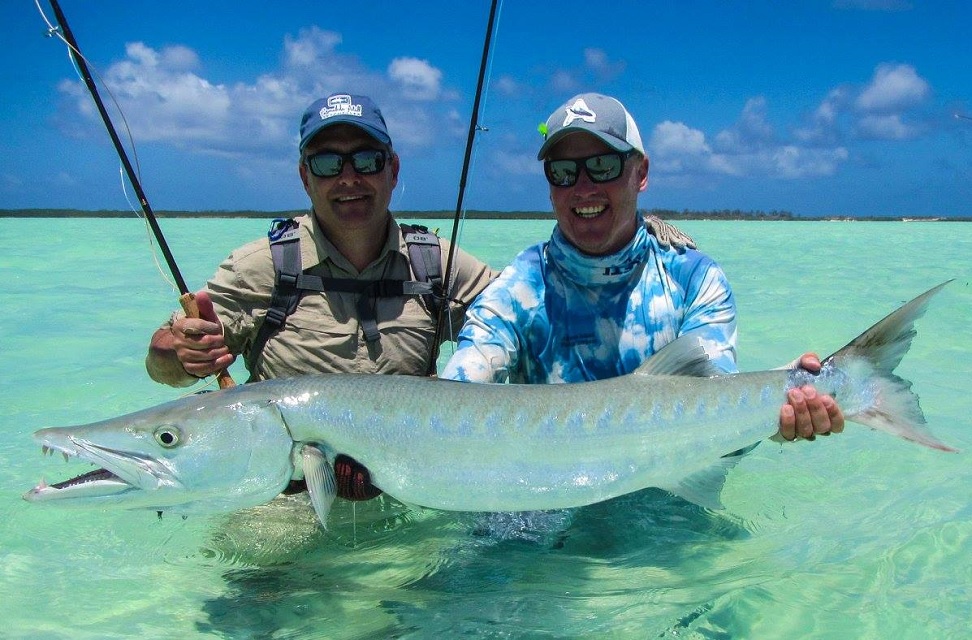
BEST FLIES FOR BARRACUDA
-
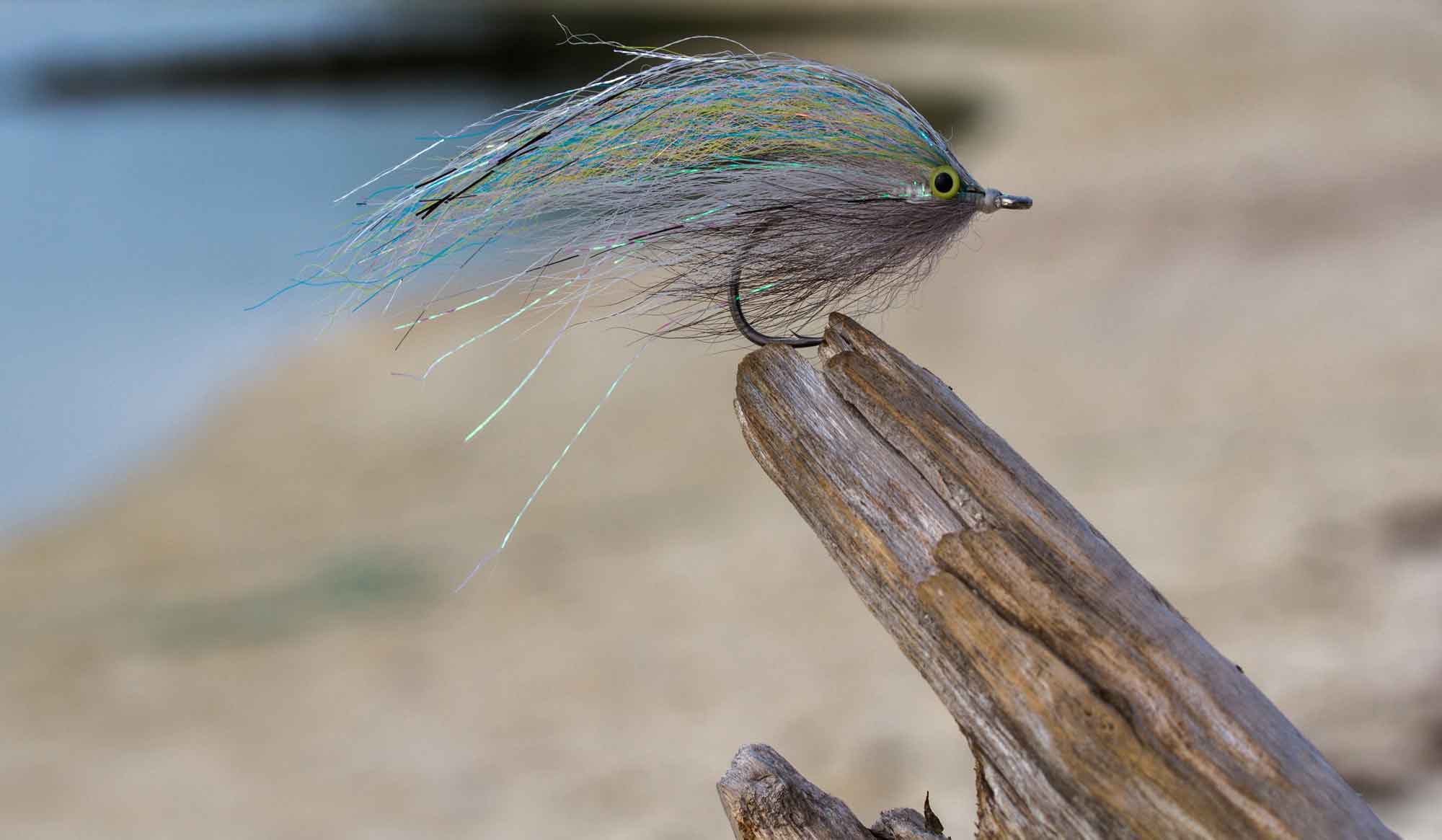
Deceiver Flies
Barracuda hunt bigger prey, so when targeting them, it’s ideal to use a baitfish imitation. A Deceiver pattern works best when lightly dressed, sparsely tied and stripped through the water as quickly as possible. Fishing on sand requires more natural colours such as white, tan, and olive. When fishing in the surf or on a darker bottom, using slightly darker colours such as black-red, blue, dark green, and brown to match the habitat is suggested.
 available On Island
available On Island
-
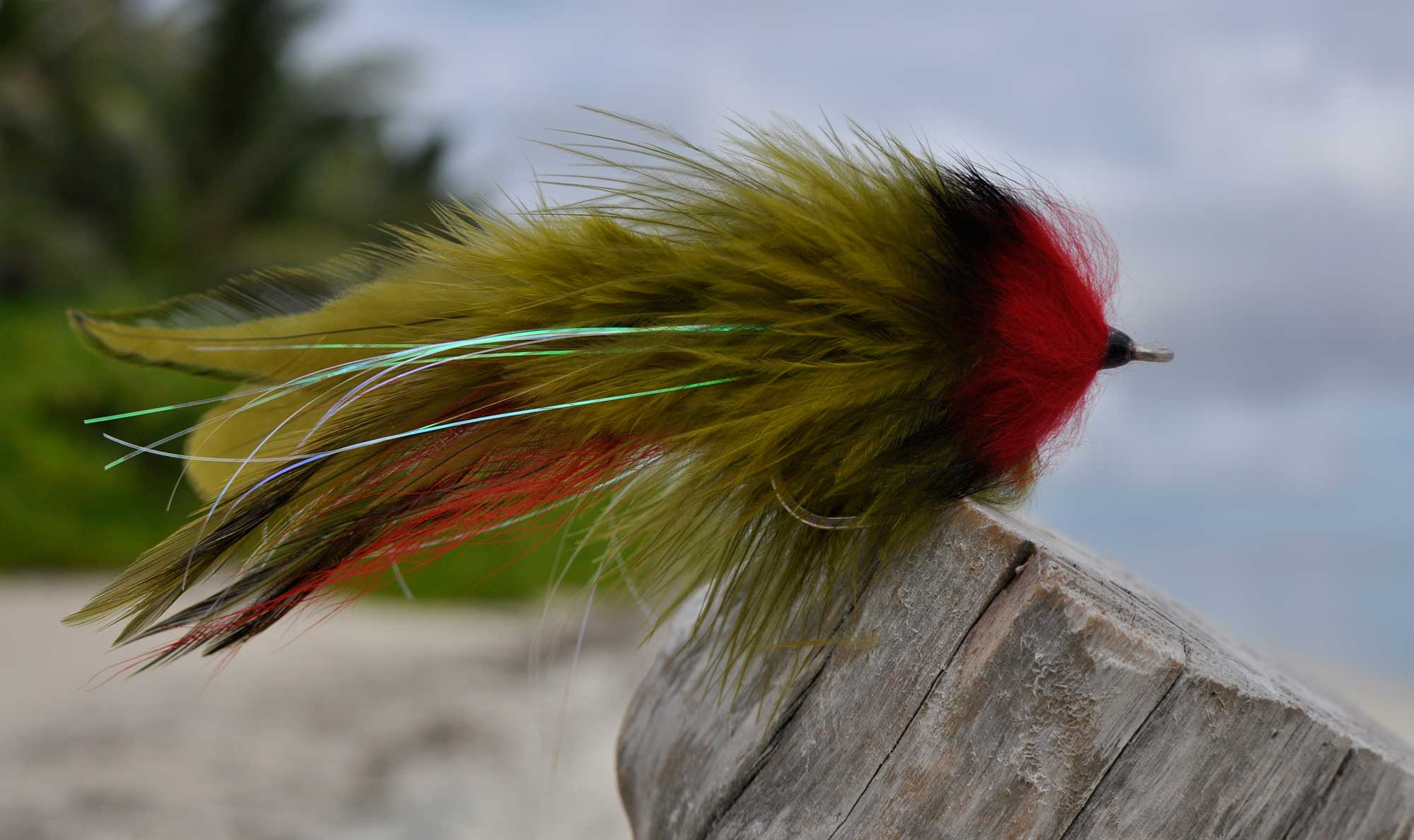
Sempers
The sempers fly, like all semper patterns, have an incredible movement in the water, which makes them irresistible to any cruising Barracuda fish. These flies are generic fly patterns, which can copy various lifeforms, such as squid or baitfish. Made from mostly natural materials, such as bucktail and feathers that give it a great movement underwater. Do note that with these flies, long and fast-as-possible strips or retrieves need to be made.
 available On Island
available On Island
-
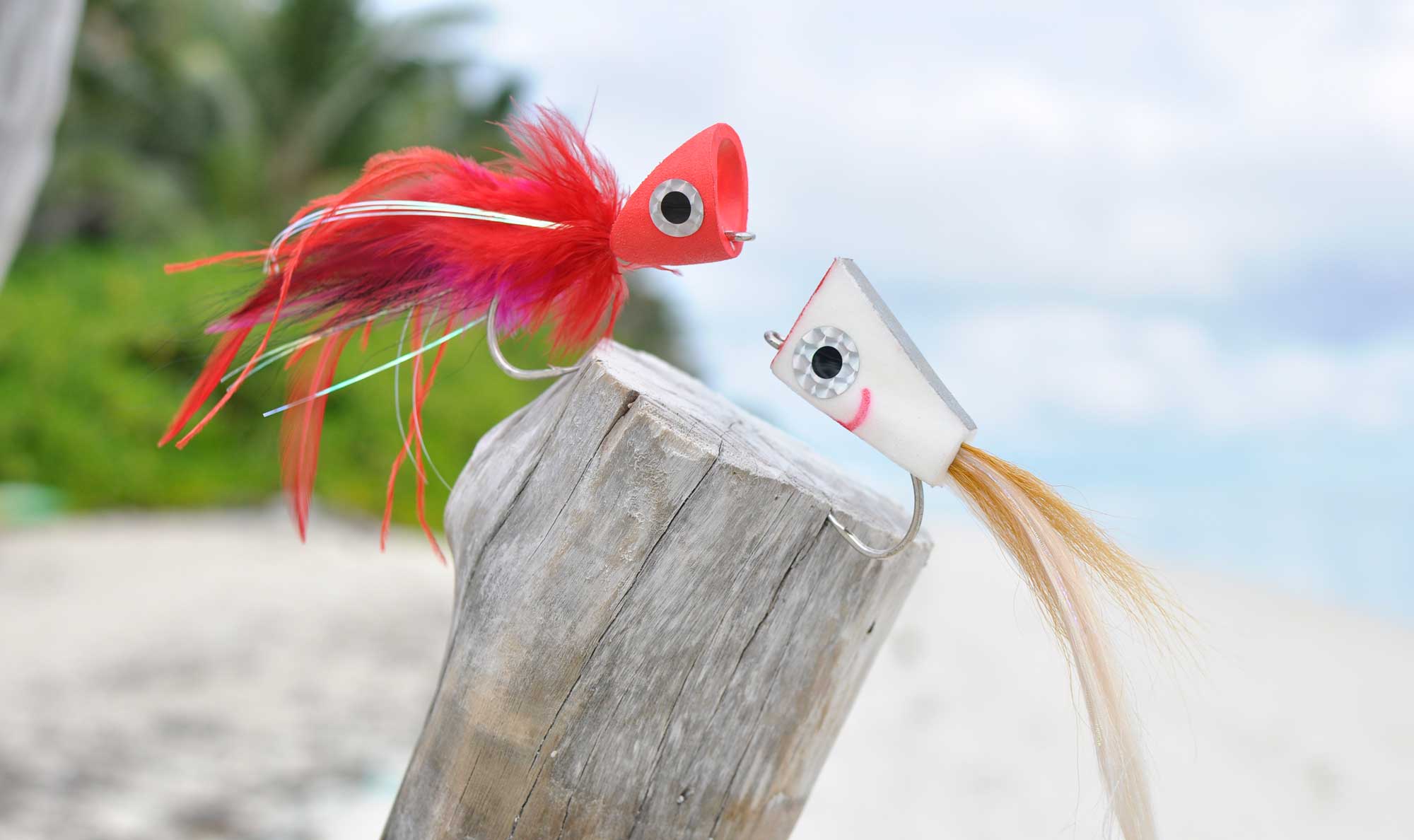
Poppers
Traditional popper patterns are becoming very popular as they create a greater disturbance on the water, which can assist in drawing the fish’s attention from some distance away. From the splash and sound they produce, these flies will be noticed from a much further distance. Poppers are generally fished over deeper waters, such as drifting on the skiff in the lagoons, casting into the channels as well as floating on the shallow outer reefs of the atolls.
 available On Island
available On Island
Best Barracuda Rod Set Up
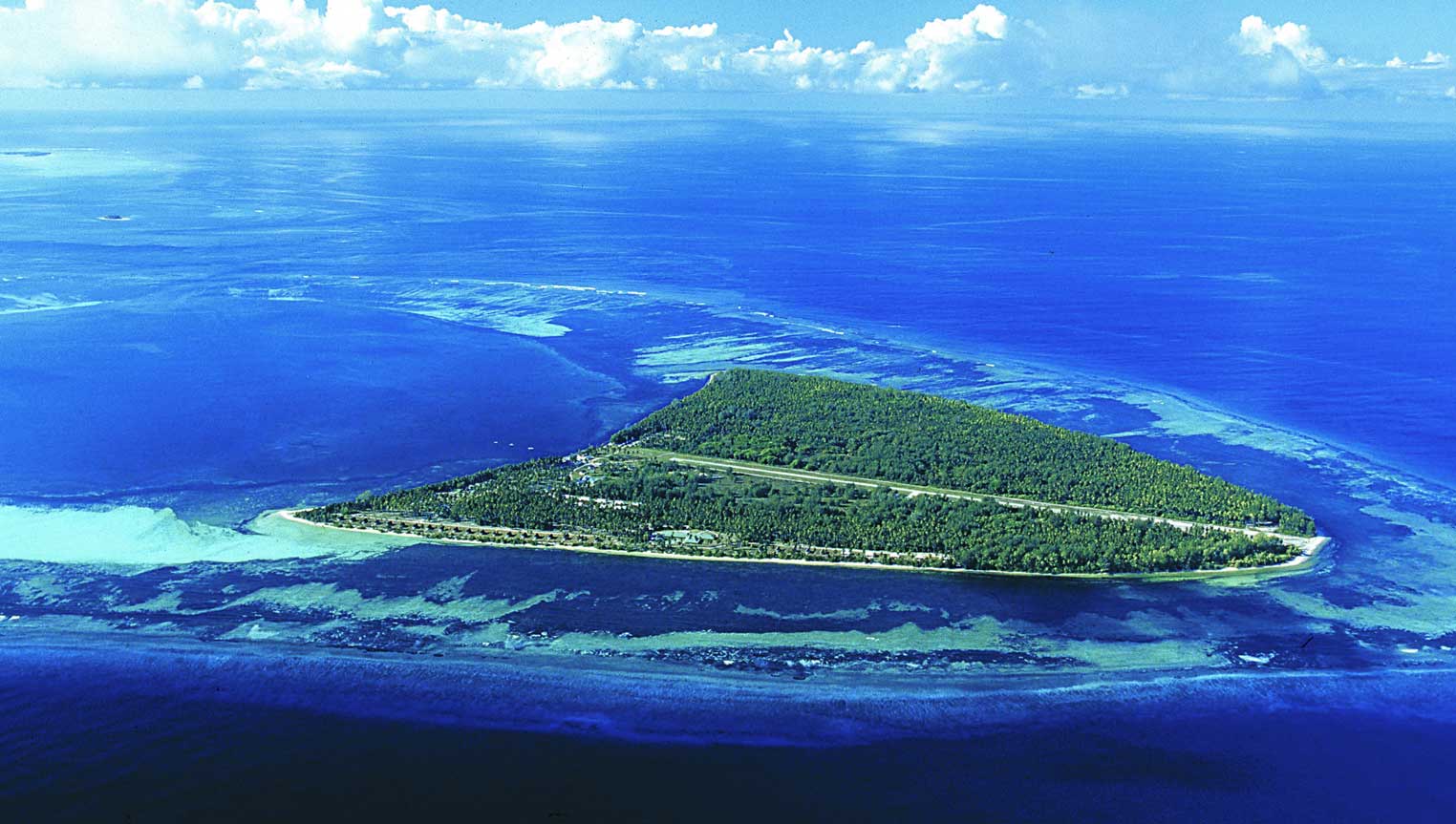
BEST TIDES FOR BARRACUDA
As a rule of thumb, barracuda is mostly targeted during the pushing tide. During this time, there is lots of water pushing behind the fish on the flats with a smaller chance of them getting trapped, which is a risk during the dropping tide, thereby leaving them more at ease. As the cool freshwater flows onto the shallow flats, many invertebrates such as crab, shrimp, and worms leave their holes. This, in turn, brings bonefish and other small fish onto the flats to feed, and the chain continues up to the bigger predatory fish like the barracuda.
Making The Catch
A good tip when making the cast is to look at where you want the fly to land rather than the fish, as this helps prevent spooking the fish by landing the fly too close. Unlike small barracuda fish, large barracuda fish must be tempted onto the fly, so let the fly sink. Once the fish is 2 m (6 ft) away, one long, fast-paced full extension strip works wonders, then stop. Big fish will reverse to build a run-up before coiling like a spring and then slamming the fly – there will be no doubt when he has taken the fly! Leave The Fly & Let Him Hammer It! If there is no reaction or he moves away, repeats the long strip. Do this until you see the fish’s body language becomes more positive. On taking the fly, keep the rod low and strip set. Several long, hard strip sets are needed. Clear your line and still keep your rod at a low angle. Play the fish and allow the drag on the reel to tighten. Big barracuda do jump, but when using a 6/0 hook an d 100 lbs line, there is little need to bow to the fish.
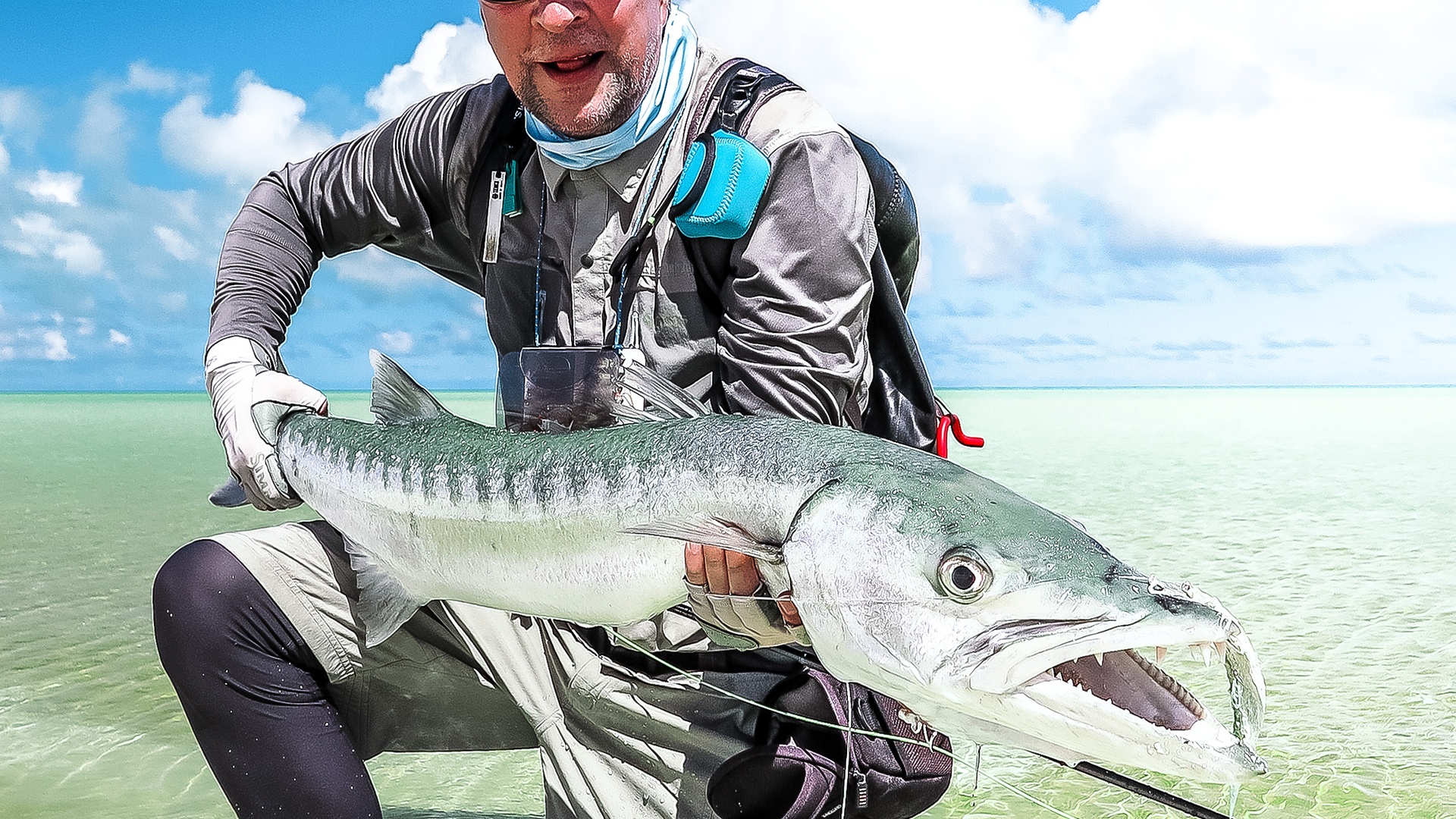
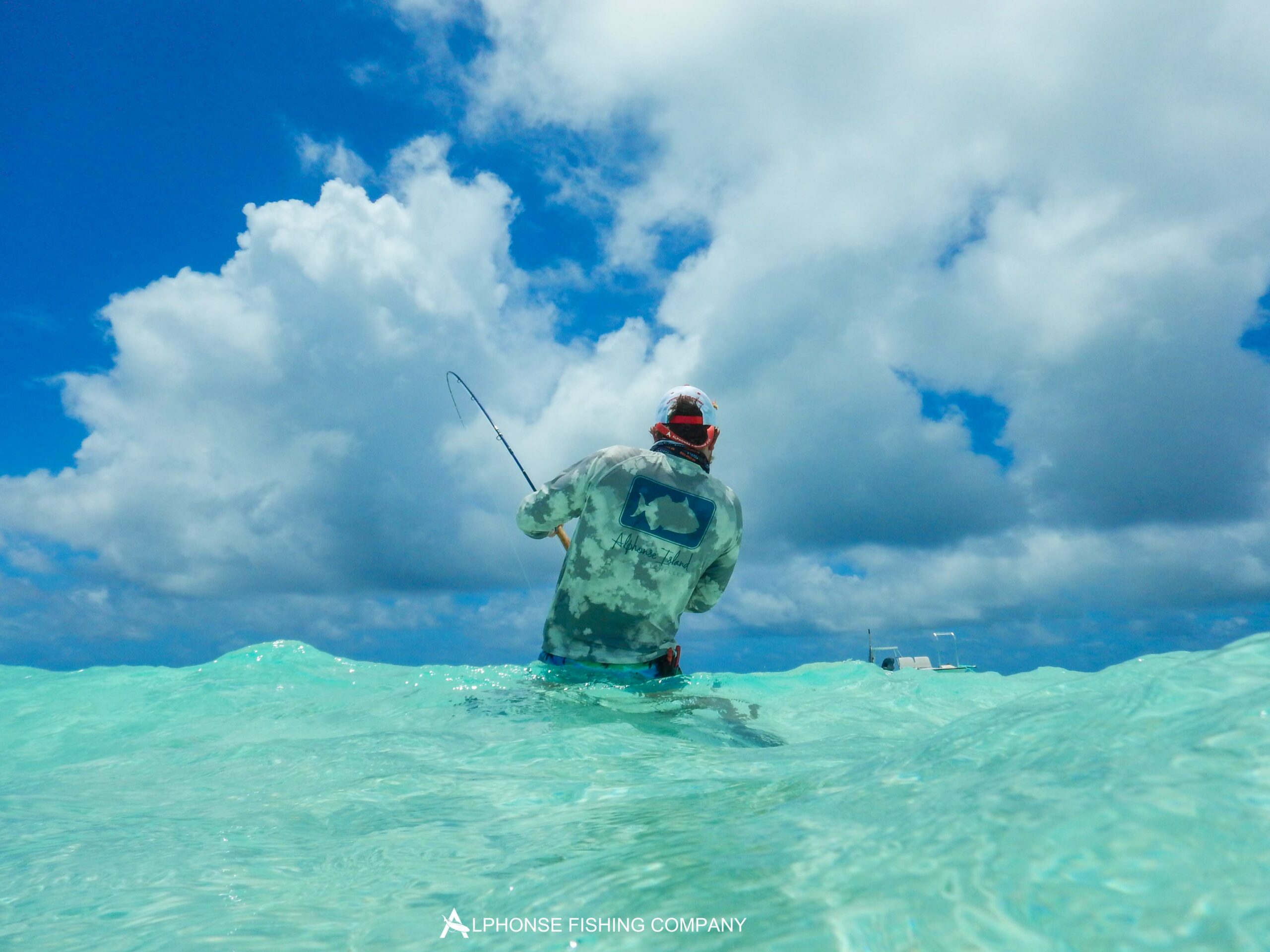
PAST CATCHES
"It's awesome when our paths cross with a barracuda. It's a spectacular fight and gets the guest's heart pumping like nothing else" - Guide
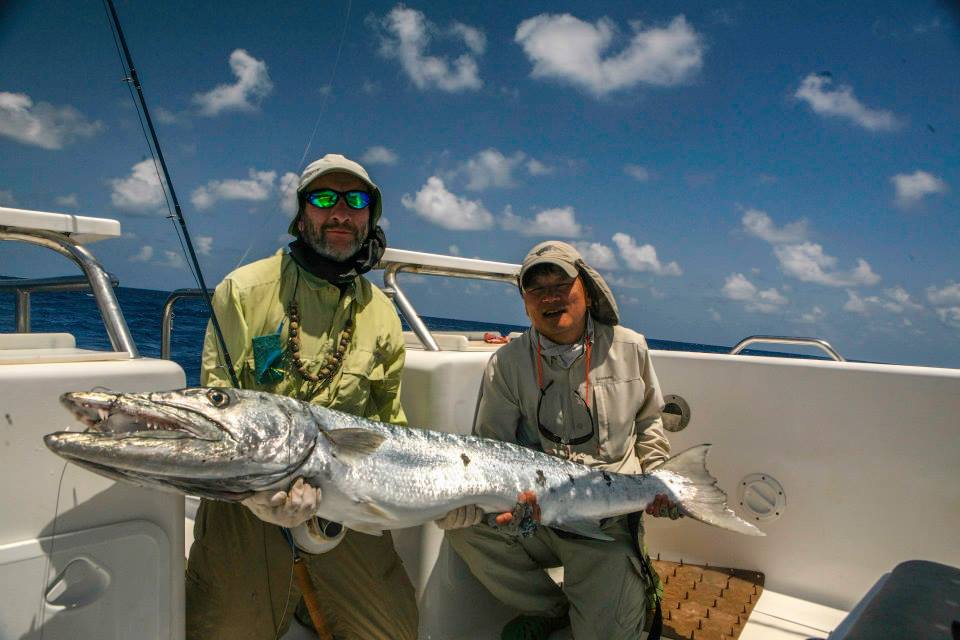

DESTINATIONS
-
Alphonse Atoll
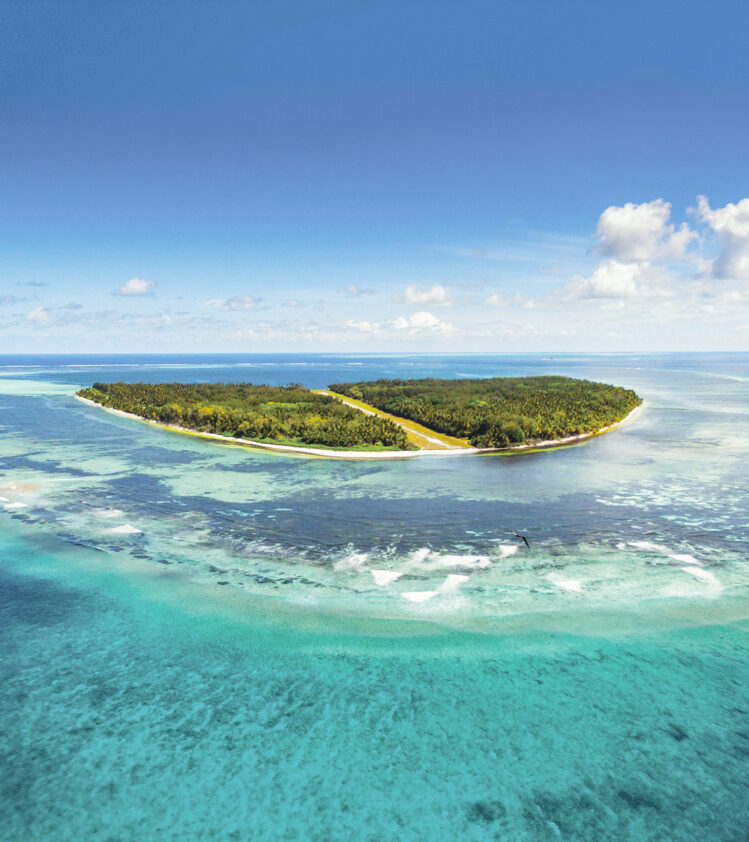 View Destination
View DestinationAlphonse Atoll
Three atolls and islands called Alphonse, Bijoutier and St Francois.
-
Cosmoledo Atoll
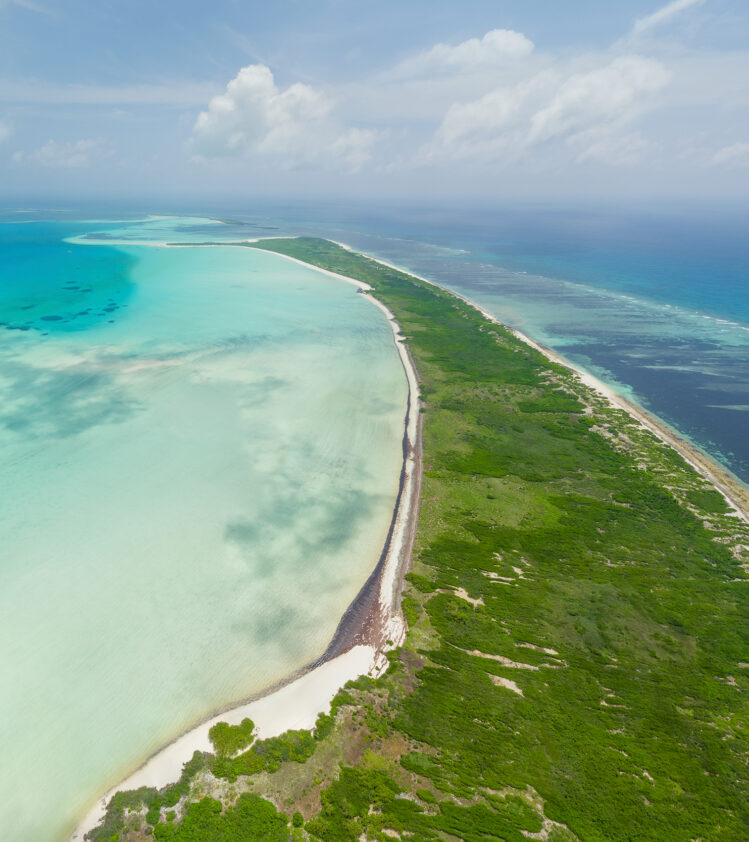 View Destination
View DestinationCosmoledo Atoll
One atoll with a vast lagoon surrounded by nineteen islands.
-
Astove Atoll
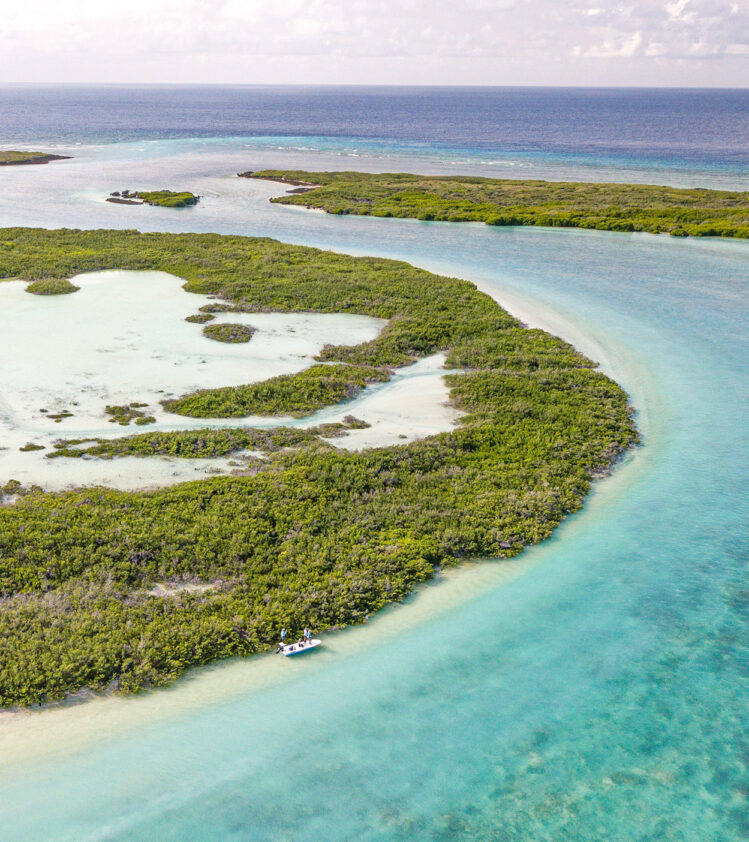 View Destination
View DestinationAstove Atoll
One atoll with an enclosed lagoon surrounded by flats and sheer drop offs.
-
Farquhar Atoll
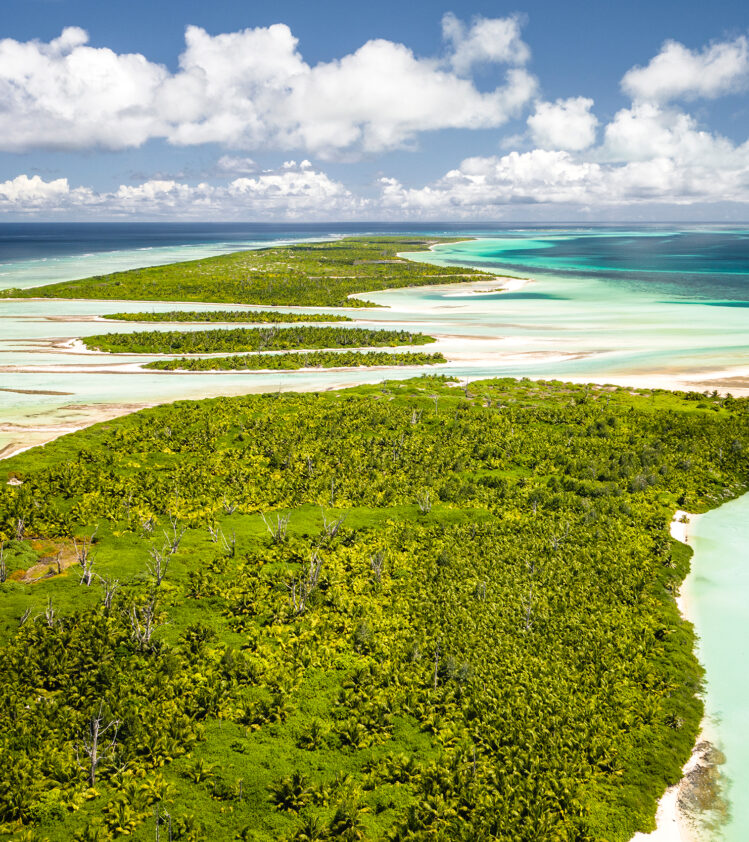 View Destination
View DestinationFarquhar Atoll
One atoll with a vast lagoon surrounded by nine islands.
-
Amirante Islands
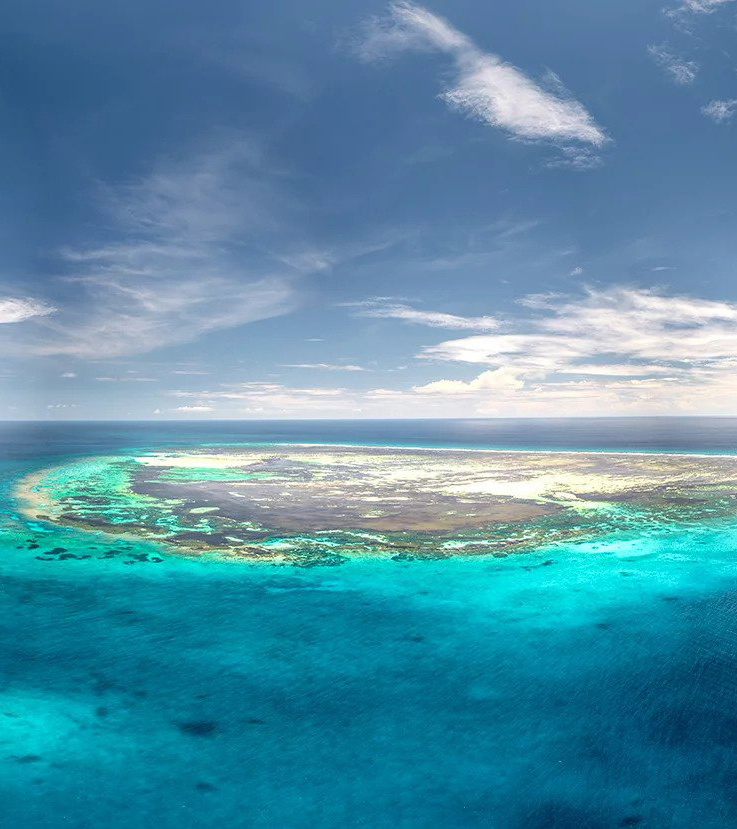 View Destination
View DestinationAmirante Islands
African Banks, Remire Reef, St Joseph’s Atoll and Poivre Atoll.
-
Providence Atoll
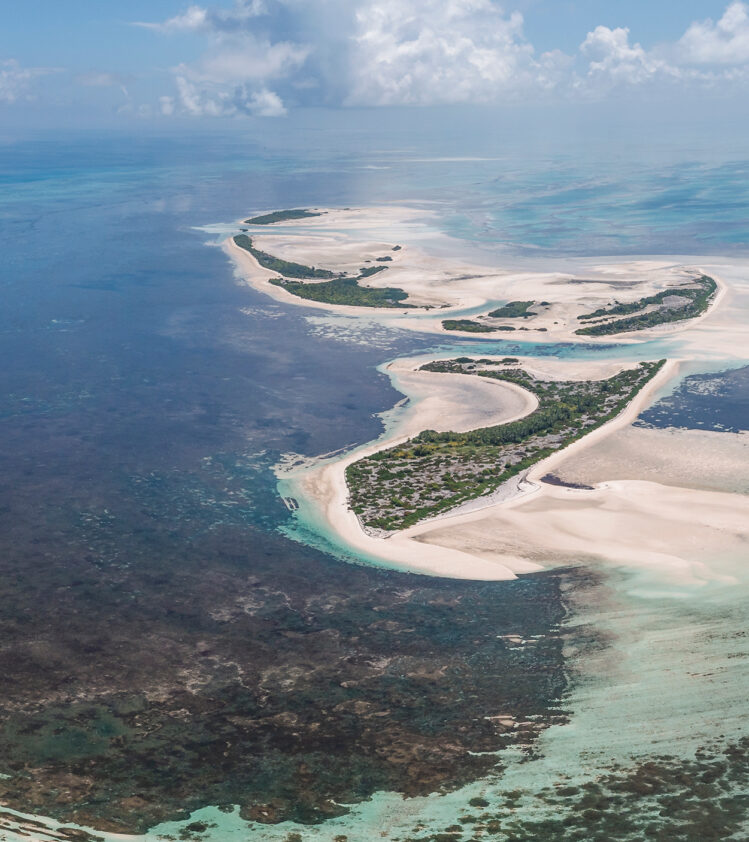 View Destination
View DestinationProvidence Atoll
One vast atoll with a shallow lagoon, sand banks, flats and channels.
MAKE YOUR BARRACUDA FISHING DREAM COME TRUE
Turn your fly into a fish’s ultimate temptation. The Seychelles, with its 115 islands and deserted atolls, ideal weather and warm Indian Ocean waters, is renowned for being home to some of the world’s richest fishing grounds. You don’t even have to venture too far to break fishing records!
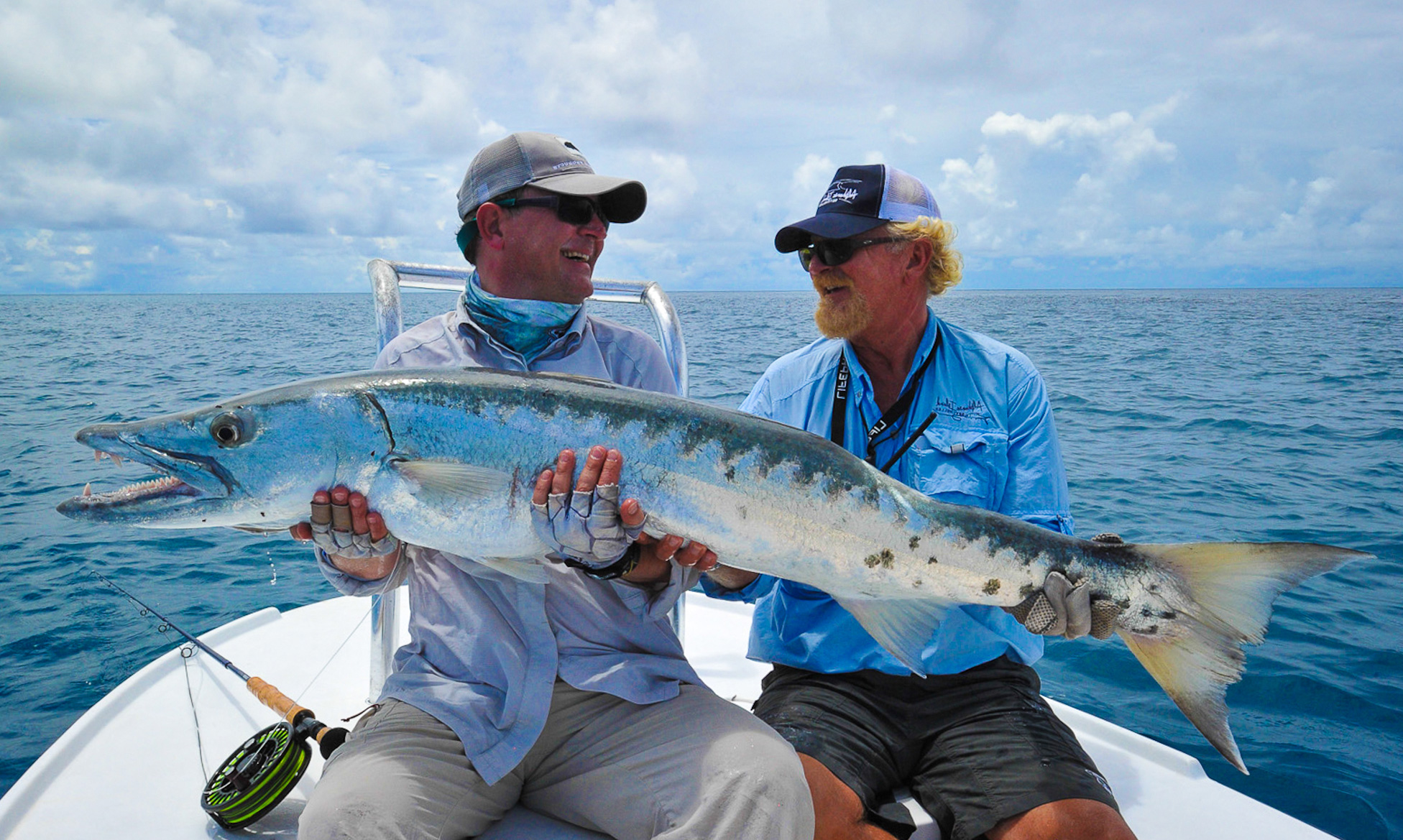
Highlights
- Home of the world's best fly fishing
- Unique, bespoke trips to suit your needs
- Located in the pristine remote outer islands of the Seychelles
- Luxury accommodation and exquisite food
- Unrivalled professional guides
- Some of the richest fishing grounds in the world
Latest Blog Posts
-
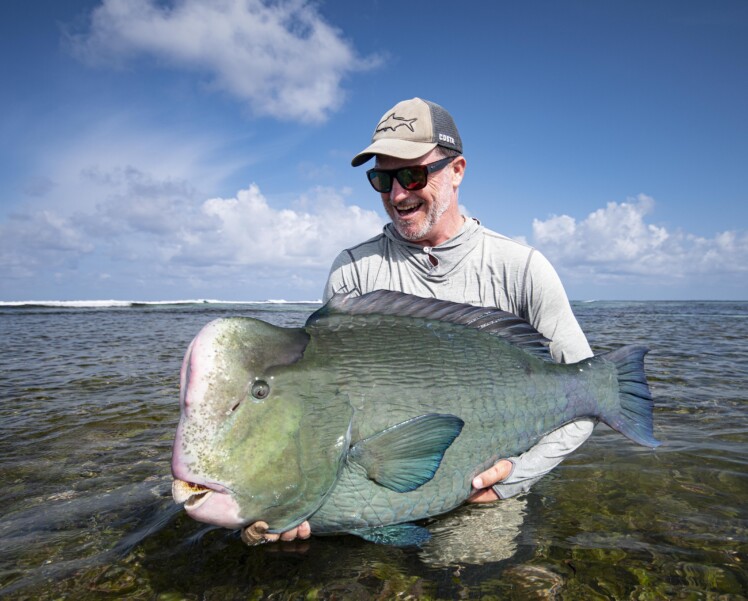
OPENING WEEK – PROVIDENCE ATOLL (22 – 29 JAN 2023)
Read More -
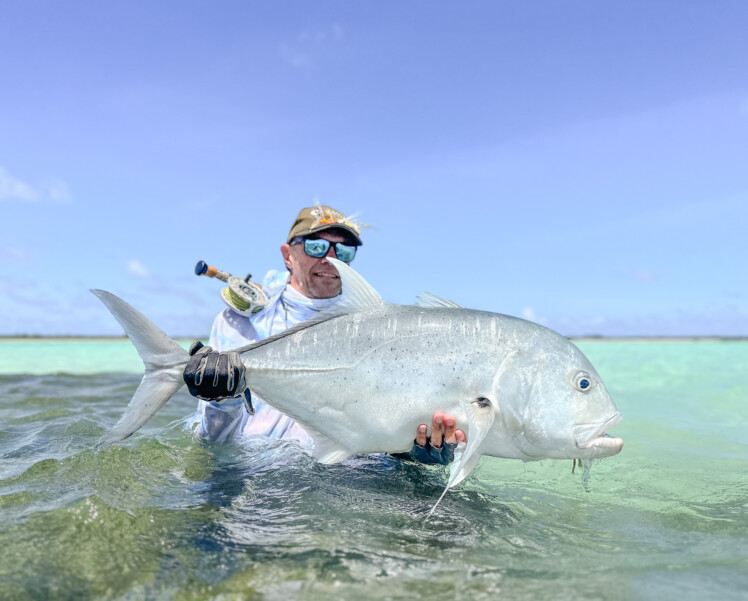
FARQUHAR ATOLL FLY FISHING REPORT (18 – 25 JAN 2023)
Read More -

ALPHONSE ISLAND FLY FISHING REPORT (14 – 21 JAN 2023)
Read More
Popular Species
Join our fishing community
Join our community to get regular updates about our fishing adventures, guide updates and special offers.
